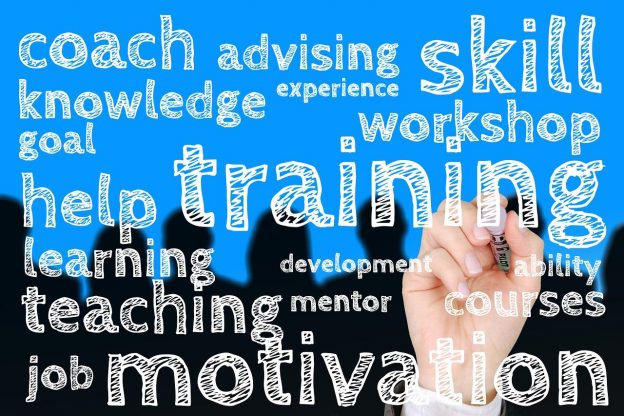GLOSSARY
Collaborative/Cooperative Learning
Collaborative/Cooperative Learning involves groups of students working together to solve a problem, complete a task or create something.
The process of analysing and evaluating information.
Making adjustments to activities to suit the individual student’s needs.
Feedback is given by the teacher or peers and is designed to bring about an improvement in learner’s performance and achievement. It can be either formal or informal, oral or written, formative or summative, but overall it must provide the learner with specific advice on how to improve their performance.
Formative assessment is ongoing assessment integrated with the teaching and learning process for the purpose of improving learning. It focuses on evaluating where students are at, offers feedback to the student, and guides lesson design and individual instruction.
Learning outcomes describe what students must know and be able to do to satisfactorily complete a task or a unit of work, as specified in the learning program.
Metacognitive strategies refers to methods used to empower students to understand the way they learn. These strategies teach students to think about their own thinking and knowing when and how to use particular strategies for learning.
Moderation is a vital part of the post-assessment process to ensure equity for all students.
It is designed to check and inform judgements made by teachers regarding student achievement.
For example, two teachers would mark a student’s piece of writing separately and then come together to compare how they have marked against the criteria and feedback given
Assessment is an ongoing process of gathering, analysing and reflecting on evidence to make informed and consistent judgements to improve future student learning.
The pedagogical framework is a set of guidelines that creates the structure around the philosophy of learning and teaching that underpins our teaching practice. Consistent and commonly shared, it enables teachers to evaluate and refine their practice, and supports them in the delivery of high-quality learning and teaching.
Pedagogy describes methods and principles of teaching. It is what teachers do in their classrooms and demonstrates how teachers can use specific teaching and learning strategies to engage students in intellectually challenging work .
Summative assessment evaluates student learning at the end of a learning segment (such as a unit) by comparing it against some standard or benchmark. Summative assessment occurs generally after learning, formative assessment during learning and diagnostic assessment before learning. Summative assessments have a high point value. Examples are ‘midterm’ and ‘end-of-term’ assessments as well as a final project at the end of the term.
USEFUL ACRONYMS
Australian Curriculum, Assessment, and Reporting Authority
Australian Education Assessment Services
Persuasive devices
Alliteration
Facts
Opinions
Rhetorical question
Emotive language
Second guessing
Triplets
Imperatives
Superlatives
Australian Institute for Teaching & School Leadership
Australian Tertiary Admission Rank
Academic Welfare
Academic Welfare is known in some schools as Pastoral Care.
A school wide ongoing pastoral care and mentoring program focusing on the wellbeing of all students. Students set goals and build on the positive culture of our school.
Generally, Academic Welfare Programs aim to:
• Provide a school environment where each member of the learning community feels safe,
valued and that their contributions are valued
• Deliver a structured wellbeing curriculum to students K-12 to provide students
opportunities to learn knowledge, skills, attitudes, behaviours and College values
• Identify and support students with diverse learning, social, emotional or wellbeing needs
• Foster personal and social development
• Promote leadership
• Strengthen learning outcomes
• Develop career and academics pathways
The DARTS framework is one way schools can provide feedback to parents and students about student learning habits.
Demonstration of persistence
Active involvement
Reflection
Time management
Striving for accuracy
International Baccalaureate
Information & Communications Technology
Schools often decide upon underpinning values which all school activities are built upon.
An example is the below.
Traditional values of Mutual Respect, Integrity, Compassion and Excellence
Paragraph structure
Point
Evidence
Examples
Link
Queensland Curriculum and Assessment Authority
Queensland College of Teachers
Strong Outcomes, Activity, Relationships, Interests, Noticing, Giving.
The SOARING model of Positive Education is reflected in a whole school approach to student wellbeing. Students are more able to achieve success when they are supported and feel that they belong to a healthy, happy and safe learning community.
Vocational Education & Training
Training courses offered by accredited Australian educational bodies. They have strong practical content and are oriented to train you for a specific profession.
What A Good One Looks Like (Worked examples / exemplars)


